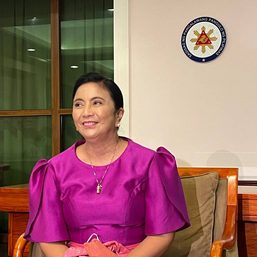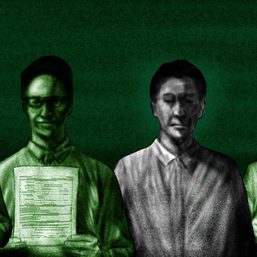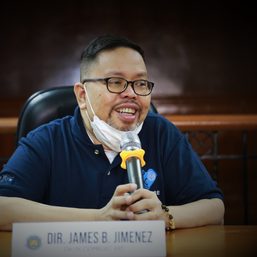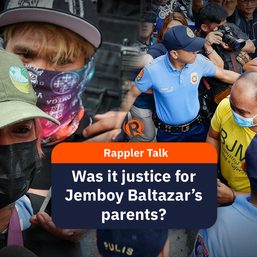SUMMARY
This is AI generated summarization, which may have errors. For context, always refer to the full article.
![[Newsstand] The challenge of the Leni campaign: Managing a movement](https://www.rappler.com/tachyon/2021/12/tl-robredo-managing-movement.jpg)
On November 24, the election show I host on Rappler featured three volunteers working for Vice President Leni Robredo’s presidential candidacy. With Dan Songco of Team Leni Robredo, Aurelio Servando of the Robredo Peoples’ Council in Iloilo, and communications expert Yvette Fernandez, we discussed the emerging dual nature of the enterprise, as both campaign and movement. It was an invigorating discussion.
But that same night, a ruckus erupted on social media between Robredo volunteers, and then amplified (to my mind, exponentially) by anti-Robredo influencers and operators. Robredo had appeared in a TikTok doing the hadouken—the “wave motion fist” that creates an energy blast, familiar to those who play video games. (I don’t, so I had to look it up.) It was instantly controversial: Defenders of the TikTok said it appealed to a different audience and broke the algorithm of that now influential social media platform; critics called it cringe-worthy and said it muddled Robredo’s messaging.
(My own view: I could understand the purpose of the attempt, but it was crudely executed and – if the first several pages of search results are any guide – widely ridiculed. A candidate’s every decision is a risk; this one seems to me to have had considerably greater cost than benefit.)
The show’s three guests, from their vantage points inside the network of Robredo supporters, were throughly convinced that her candidacy had become a movement. “It’s more than just a campaign,” Servando said. Songco, who like Servando had helped coordinate simultaneous mass-based activities like the “lugaw” drive and the “stationary caravan,” said the candidacy was both campaign and movement. “This is hybrid, it’s very dynamic. There is a lot of energy coming from below. The energy of the volunteers fuel the decision-making.” Fernandez, who took a leave of absence from her senior management position the week Robredo declared for the presidency, agreed. “I think this is a movement. So many people have gotten involved. They’re spending their own money on it.”
Genuine signs
The two academics I also interviewed, to ask how journalists ought to cover movements, shared the same view. Both University of Santo Tomas journalism professor Felipe Salvosa and Xavier University-Ateneo de Cagayan development communication professor Rechelle Ann Barraquias agreed that the Robredo campaign was in fact exhibiting signs of a genuine popular movement.
The morning after the show, however, I saw that my social media timelines (and some of the chat rooms I was in) were filled with very public exchanges between Robredo supporters voicing very strong opinions for or against the hadouken move. It seemed to me as though a threshold had been crossed.
On reflection, I have belatedly recognized that what happened in the last week of November was in fact proof, but of the negative kind, that the Robredo campaign is also a movement. More negative proof came in the last couple of weeks, including but not limited to the heated debates between Robredo supporters a) over the kind of billboards that should be put up, b) whether columnist Manuel L. Quezon was right to assert that Ferdinand Marcos Jr. had successfully claimed the mantle of change and that the Vice President had failed to define herself in the public mind, and c) if the ornery controversialist Miyako Isabel diagnosed the Robredo campaign’s media and communications failures right.
People donating their own money and time, unmistakable energy from the ground up, a candidacy driven by and open to creative ideas from supporters: These are positive proofs of a real movement.
But an honest-to-goodness movement, especially one that emphasizes flexible protocols rather than formal structures (“adhocracy”) and collective participation rather than clear leadership (“smart mobs”) can also be characterized, or defined, by its share of problems that are in fact common to many movements. These problems – the negative proofs – are the almost universal but still (for many of us) unanticipated consequences of contemporary movement organizing.
Social movements
On the matter of social movements, I follow the sociologist Zeynep Tufekci’s lead. I find her reflections on the power and limitations of social movements in a digitally networked public sphere – understood from the unique perspective of both signaling theory and capacity theory – to be illuminating and profoundly practical.
I had a chance to reference some of Tufekci’s thinking at the first international conference on “lawfare,” organized by the office of Senator Leila de Lima and held on February 21, 2020 at De La Salle University in Manila. Allow me please to cite the central passage: “How do we combat ‘lawfare’? I will borrow Zeynep Tufekci’s framework for capacity building in social movements. We need to develop three strengths: narrative capacity, disruptive capacity, and electoral capacity.” (I will expand on these points in a separate piece.)
In Twitter and Tear Gas: The Power and Fragility of Networked Protest, Tufekci proposes the concept of “network internalities,” to mean the “benefits and collective capabilities attained during the process of forming durable networks.” It is what a movement learns, or ought to learn, in the process of organizing: how to coordinate, how to interact, how to negotiate, how to decide collectively, how to speak for everyone, not least how to make sure that the small stuff gets done.
“In the long term … the process of organizing may be as important as the immediate outcomes. This is why it matters whether the word gets out via flyers (a more laborious task) or hashtags (which lend themselves to decentralized organization), and whether meetings were held every day to organize a carpool, or whether a Google spreadsheet maintained by a few people was used.”
Network internalities
As we are seeing in real time the last few days, the Office of the Vice President has over the last five and a half years developed robust network internalities for working with its partners in order to respond quickly and effectively to both natural and manmade calamities.
But the movement that has sprung up to draft Robredo and then support her candidacy, and the campaign that manages that candidacy, have not yet developed the necessary network internalities. The reasons must be many: Not enough time to work together, the true diversity of support, a very strong culture of participation, and so on. As long as these internalities have not yet gelled, we can expect more of the following:
- A “tactical freeze,” or an inability “to develop and agree on new paths to take.” Tufekci: “by design, by choice, and by the evolution of these movements, they lack mechanisms for making decisions in the face of inevitable disagreements among participants.”
- De facto leadership: “Ostensible leaderlessness does not stop de facto leadership from springing up, and the de facto leadership is often composed of those with the most time, tenacity, energy, extroversion, preexisting social status, and even plain aggressiveness.”
- Infighting. This is a natural consequence of having de facto leaders or spokespersons. “These leaders are … unable to exert influence without facing significant attacks from within the movements – attacks that often happen publicly, visible to all and recorded for the future, rather than in an argument in a union hall or a living room that might soon be forgotten, or at least not relived again and again through retweets and screenshots of old arguments.”
To name the problem is the first step; the track record of both Robredo and her office suggests that they can find the means to strengthen her candidacy’s network internalities—and in the process help build its narrative, disruptive, and electoral capacities.
Servando is a true leader of the movement. When I asked him how he responded to Robredo’s new emphasis on political love as strategy, he was candid enough to say: “We had some resistance because we wanted to fight fire with fire, but we had to recalibrate. We realized this is what she wants to be implemented.”
The candidacy, both as movement and as campaign, must faithfully reflect the candidate. – Rappler.com
Veteran journalist John Nery is a columnist and editorial consultant of Rappler.
Add a comment
How does this make you feel?
![[WATCH] In The Public Square with John Nery: Preloaded elections?](https://www.rappler.com/tachyon/2023/04/In-the-Public-Square-LS-SQ.jpg?resize=257%2C257&crop=414px%2C0px%2C1080px%2C1080px)
![[Newspoint] 19 million reasons](https://www.rappler.com/tachyon/2022/12/Newspoint-19-million-reasons-December-31-2022.jpg?resize=257%2C257&crop=181px%2C0px%2C900px%2C900px)

![[OPINION] The long revolution: Voices from the ground](https://www.rappler.com/tachyon/2022/06/Long-revolution-June-30-2022.jpg?resize=257%2C257&crop=239px%2C0px%2C720px%2C720px)
![[OPINION] I was called a ‘terrorist supporter’ while observing the Philippine elections](https://www.rappler.com/tachyon/2022/06/RT-poster-blurred.jpeg?resize=257%2C257&crop_strategy=attention)
![[Newspoint] Improbable vote](https://www.rappler.com/tachyon/2023/03/Newspoint-improbable-vote-March-24-2023.jpg?resize=257%2C257&crop=339px%2C0px%2C720px%2C720px)







![[New School] Tama na kayo](https://www.rappler.com/tachyon/2024/02/new-school-tama-na-kayo-feb-6-2024.jpg?resize=257%2C257&crop=290px%2C0px%2C720px%2C720px)
![[Newspoint] The Tañada legacy](https://www.rappler.com/tachyon/2024/07/newspoint-tanada-legacy.jpg?resize=257%2C257&crop=288px%2C0px%2C720px%2C720px)
![[Free to Disagree] Boomers, let go please](https://www.rappler.com/tachyon/2024/07/tl-boomers-let-go.jpg?resize=257%2C257&crop=286px%2C0px%2C720px%2C720px)


![[ANALYSIS] The political divorce rocking the Philippines](https://www.rappler.com/tachyon/2024/07/TL-duterte-marcos-china-US-feud-july-4-2024.png?resize=257%2C257&crop=303px%2C0px%2C720px%2C720px)
There are no comments yet. Add your comment to start the conversation.